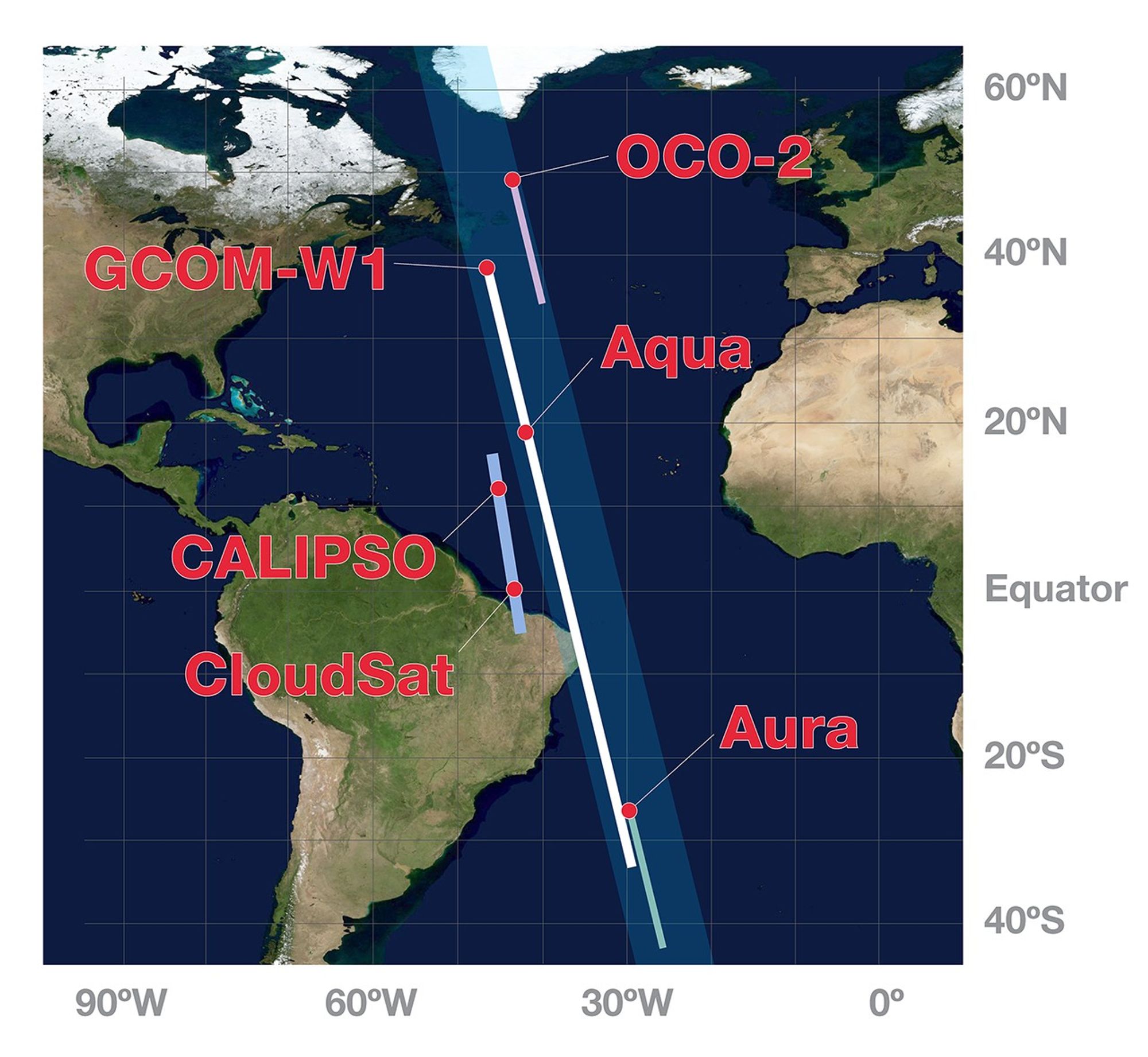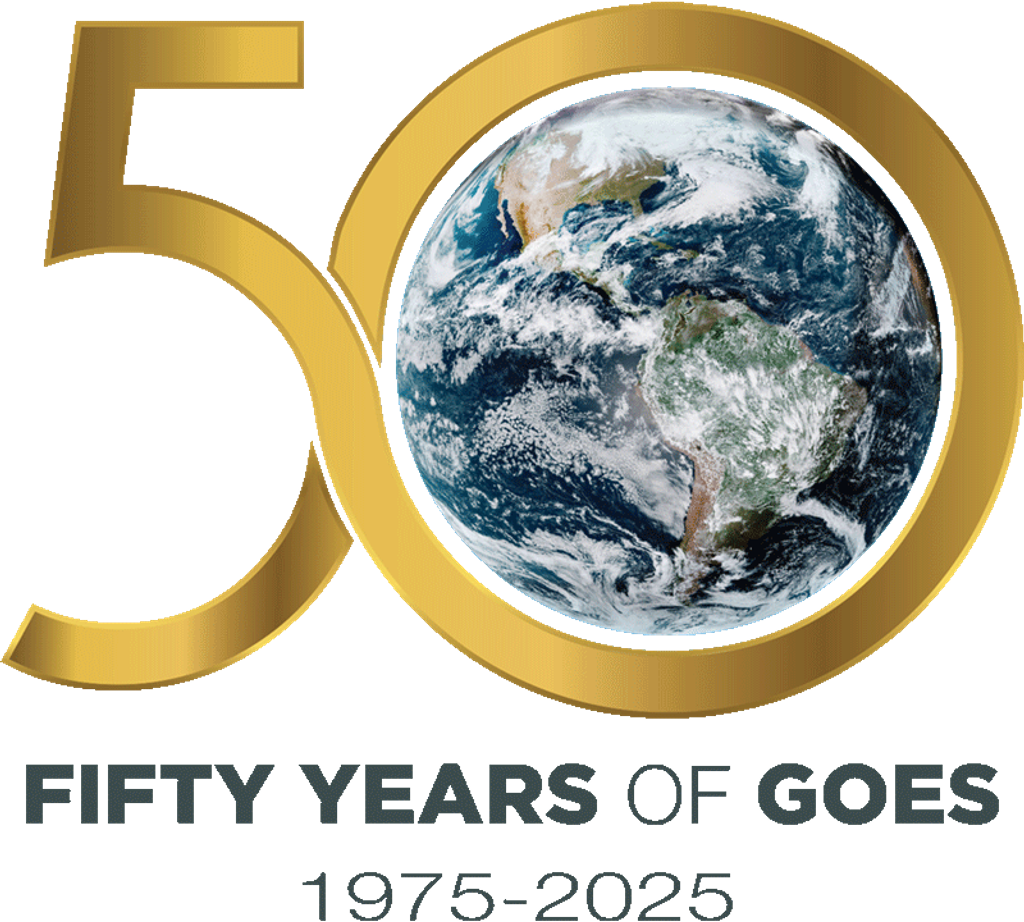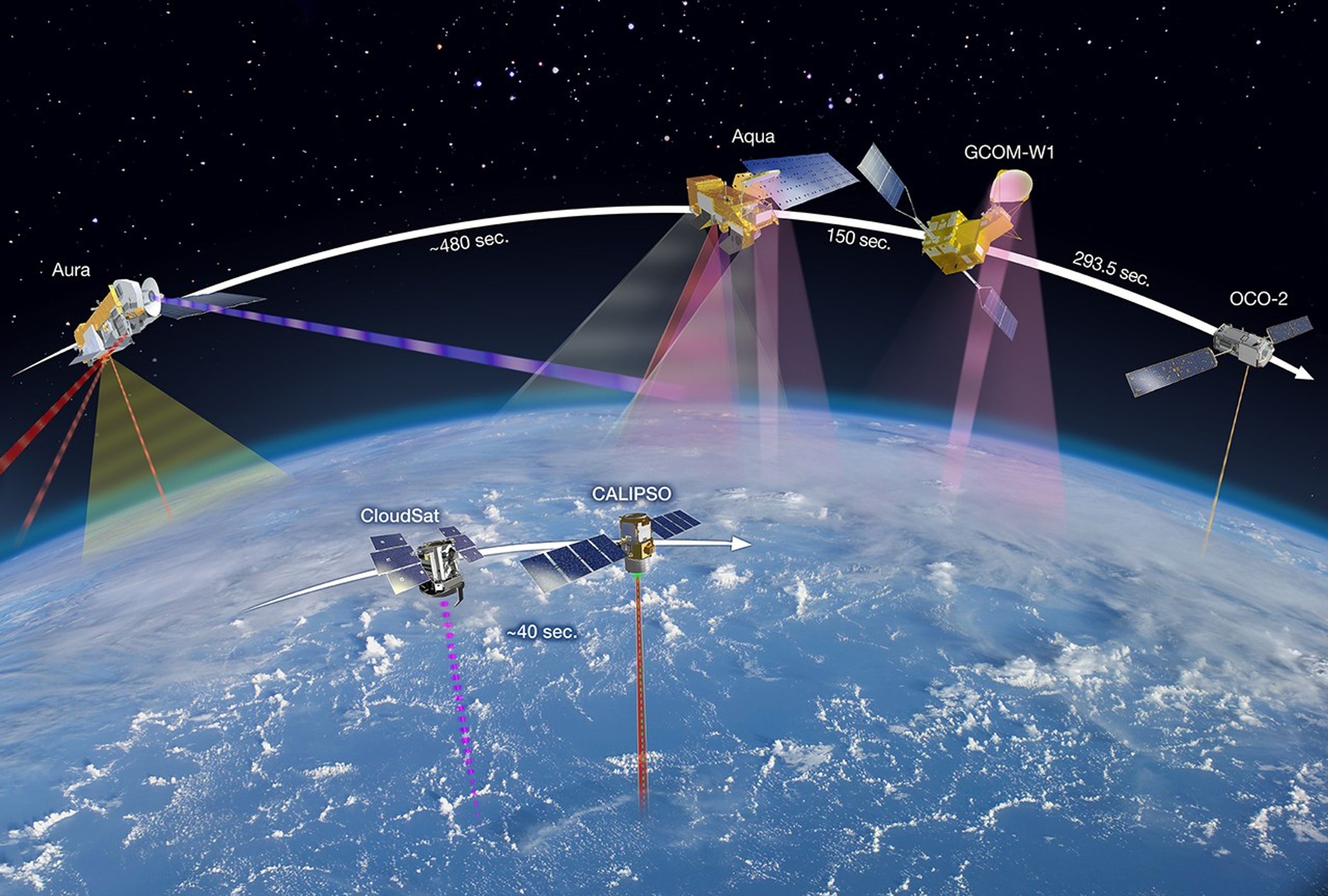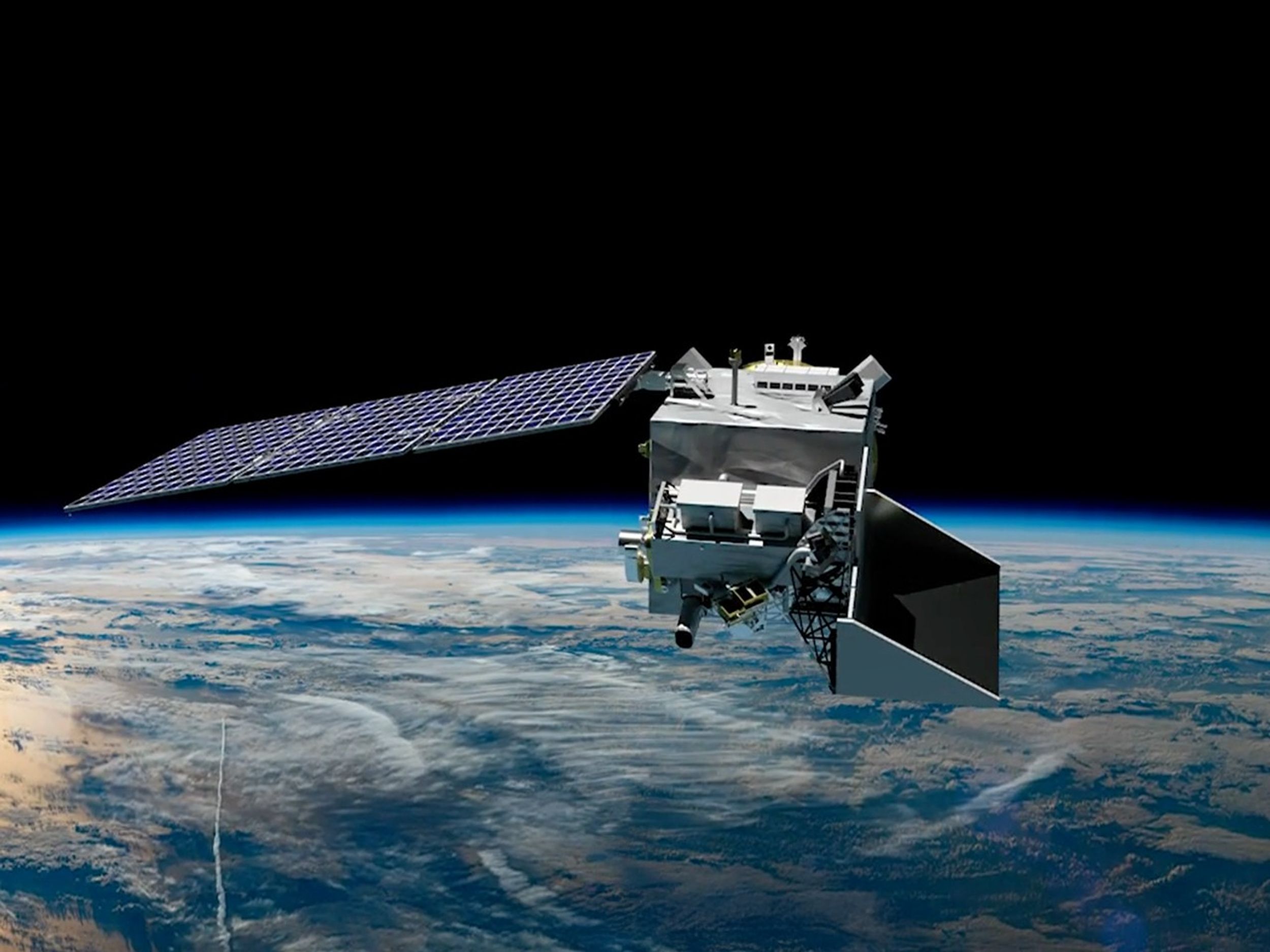Taking the A-Train
The Afternoon Constellation is composed of a number of satellites following one another along a “track” in space. While they aren’t literally connected like railroad cars, precise engineering and planning—called constellation flying—allows for them to function as if they were “connected.”
Constellation flying allows the instruments on all of the A-Train and C-Train satellites to function as if they were together on a large extended satellite platform. This means that scientists can use instruments on several different satellites in the constellation to study a particular atmospheric phenomenon of interest—e.g., clouds, aerosols, trace gases—and learn more than they could have with any one satellite by itself.
Combining data from these satellites enables scientists to gain a better understanding of a variety of Earth-system processes, including those relevant to climate. Data collected synchronously gives more-complete answers to important scientific questions than would be possible with satellite data collected at different times.
The Benefits of Constellation Flying
The Afternoon Constellation is a series of satellites following each other in orbit. In order for multiple instruments to effectively observe the same Earth scene—and thereby obtain more data than could be provided by any one instrument—the instruments must view the scene within a short time period to prevent changes in observing conditions (especially true for clouds). Different satellites that carry these instruments must, therefore, fly closely together in a carefully planned and executed manner.

Science from the MODIS instrument on Aqua can be compromised by sunglint for non-cloudy scenes over the ocean. Therefore, when CALIPSO and CloudSat were still positioned within the A-Train proper, they were located so that coincident MODIS views avoided this potential sun glint signal contaminating. Specifically, these two satellites were positioned to the side of Aqua’s ground track that is opposite the sun. Aura is positioned substantially behind the other A-Train satellites, so its Microwave Limb Sounder (MLS) can view horizontally under the same portion of the atmosphere that Aqua is viewing from above.
There is a remarkable advantage to this precise constellation: At the expense of a slight temporal separation, constellation flying of multiple satellites replicates observations from a single satellite that is hundreds of kilometers in size.
How It Works: Control Boxes
The Afternoon Constellation allows for synergy between the missions. However, in order for synergistic measurements to be successfully obtained, the constellation configuration has to be carefully aligned in time and space, with respect to each other and with respect to the ground track on the Earth. This calls for ongoing coordinated maneuvering of the spacecrafts to keep them in a tight configuration.
The heart of constellation flying is the implementation of control boxes. Each satellite is allowed to drift within its respective control box (seen in the diagram above as colored boxes surrounding the satellites) until it approaches the boundary of its box. At that point the satellite must execute maneuvers to adjust its orbit. These maneuvers maintain the observing times and geometries of the instruments, but more importantly, they avoid potential collisions that would threaten the entire constellation by producing a debris field, not to mention the loss of synergistic data.
In the current A-Train configuration, Aura, OCO-2, and GCOM-W1 are maintained inside control boxes of ±43 seconds. Aqua is maintained inside a control box of ±21.5 seconds (about ±158 km at its orbital velocity). In the current C-Train configuration, CALIPSO experiences about twice as much drag as CloudSat, therefore, CloudSat conducts periodic orbit lower maneuvers to maintain a 40-second, along-track offset with respect to CALIPSO. This positioning will be maintained within about ±8.5 seconds, or about 4km of ground track offset, from CALIPSO.
While the orbits of the A-Train and C-Train follow slightly different ground tracks due to differences in altitude, the two constellation tracks intersect each other about every 20 days. This allows simultaneous A-Train/C-Train instrument measurements on a regular basis.
































